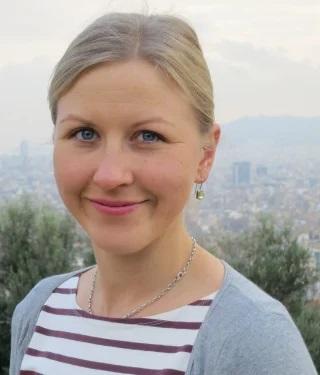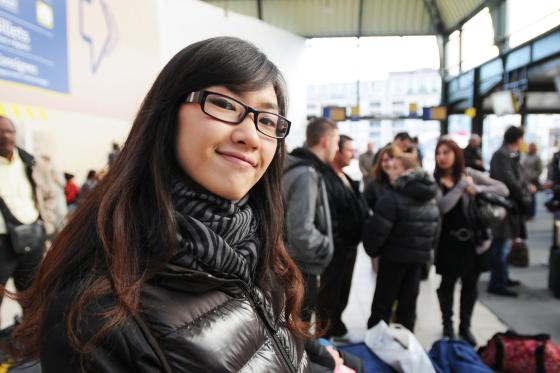International recruitment can boost the proportion of women
Foreign women have flocked to temporary researcher positions in the Nordic countries. Without these women there might have been far fewer female post-docs in Norway and Sweden.

Internationalization is rapidly changing recruitment outcomes at universities and other research and education institutions. This holds true in the Nordic countries as well.
A study based on statistical data from Norway, Sweden and Finland shows that foreign-born women now make up a substantial share of researchers in temporary post-doc positions, particularly in the STEM fields (science, technology, engineering and mathematics).
Positive effect found
Previous international research has indicated that increased recruitment of employees from across national borders may lead to a decline in the proportion of women. The new study – by a team of Finnish, Swedish and Norwegian researchers – suggests the opposite.
“Globalization may weaken gender balance, according to some studies indicating that men are more mobile than women,” says Maria Pietilä, a post-doc at the University of Eastern Finland and a co-author of the study.
“In the Nordic countries as well, there are more foreign men than foreign women in the positions we have examined,” she confirms.
“But globalization of the academic labour market does not appear to have changed the overall proportion of women in teaching and researcher positions much, since foreign women seem to be replacing native-born women.”
“Significant changes”
The study’s authors examined gender balance and the distribution between Nordic and foreign-born employees in the period 2012 to 2018.
“When we consider the short time perspective, just seven years, the changes are quite large,” says Pietilä.
The study focuses on two selected stages of academic career trajectory. The first, Grade C, includes post-doc positions and similar recruitment positions. These are positions for those who have completed their doctoral degree and are early in their academic careers. The other stage, Grade A, includes professors and other positions high on the career ladder.
The post-doc level, Grade C, is where international recruitment has had its clearest impact. The share of foreign-born researchers in both Norway and Sweden increased sharply from 2012 to 2018.
This surge in post-doc positions applies to both women and men. In Norway, the overall proportion of foreign researchers climbed from 50 per cent to 68 per cent during the period.
Fewer native-born women, more foreigners
When we examine the share of women by country, the proportion of foreign women among post-docs in Norway increased from 21 to 28 per cent. Overall, however, the share of women actually declined somewhat because the proportion of Norwegian women fell from 27 to 17 per cent.
“The share of native-born women in Grade C has fallen in all three countries. But foreign-born women are helping maintain a relatively high proportion of women,” reports Pietilä.
In Sweden, the share of foreign women in these positions increased even more than in Norway – and correspondingly, the share of native-born women declined more than in Norway as well. But the total proportion of women in Sweden dipped only slightly.
Finland, compared to its two Nordic neighbours, has pursued a more moderate brand of internationalization. The share of foreign women grew more slowly, from 8 per cent to 12 per cent. In Finland, however, the share of homegrown women among post-docs is much higher than in Norway and Sweden.
The total share of women among post-docs in 2018 ended up very similar across the three countries, with Finland and Sweden at 45 per cent and Norway at 46 per cent.
Few foreign women professors
When we look at Grade A, i.e. professors and other top positions, figures on the share of foreign-born women changed little from 2012 to 2018.
A partial explanation for this is that these positions are predominantly permanent, so there is less turnover than at the post-doc level.
In Norway, the proportion of foreign-born professors rose from 24 per cent to 30 per cent during the period.
But just 8 per cent of all professors in Norway in 2018 were foreign women.
The trend in Sweden was similar to Norway, while Finland was the outlier with only 2 per cent foreign women among professors.
Despite these variations in figures for foreign women professors, the overall share of women was fairly comparable across countries. The great majority of professors are men, while in 2018 women comprised 31 per cent of professors in Norway, 27 per cent in Sweden and 28 per cent in Finland.
Calling for strategies for internationalization and gender balance
“Too little attention is paid to the gender dimension in international recruitment, at both the central research policy level and the institutional level,” believes Agnete Vabø, Associate Professor at Oslo Metropolitan University (OsloMet) and a co-author of the study.

Vabø heads the research project “Gender, citizenship and academic power” under the Research Council of Norway’s BALANSE programme.
She argues that strategies and guidelines for internationalization need to be designed with the impact on gender balance in mind.
“I believe there should be a more conscious assessment of the role that international recruitment plays for gender composition in disciplines and subject areas, both negatively and positively,” says Vabø.
One issue is whether universities have considered that their recruitment pool for permanent positions is now largely foreign researchers in temporary positions.
Vabø points to the trend in the STEM fields, where Norway has implemented a number of measures to promote better gender balance. But at the post-doc level in these fields, in both Norway and Sweden, there are far more foreign women than Norwegian or Swedish women.
Extra barriers for foreign researchers?
“I believe the trends we’ve observed will probably continue,” says Maria Pietilä.
She feels that internationalization should affect how institutions think when it comes to recruitment to permanent positions.
For the most part, says Pietilä, foreign researchers at Nordic universities occupy the lower rungs of the career ladder. In her view, universities should regularly review their recruitment policies to determine whether there are structural conditions that may have a discriminatory effect.
“They should take a close look at whether foreign employees have a chance to qualify for positions higher on the career ladder and not simply remain temporary employees.”
The question is whether foreign researchers desiring permanent positions face extra barriers along the way. Pietilä says the research literature has no clear answers as to whether discrimination is currently taking place.
Translated by Darren McKellep.
Maria Pietilä of the University of Eastern Finland, Ida Drange of the Work Research Institute at OsloMet in Norway, Charlotte Silander of Linnaeus University in Sweden and Agnete Vabø of OsloMet co-authored the article Gender and Globalization of Academic Labor Markets: Research and Teaching Staff at Nordic Universities.
The article was published in the journal Social Inclusion (2021). Its topic is internationalization and gender balance in research and higher education in Norway, Sweden and Finland. The study was part of the Nordic Centre for Research on Gender Equality in Research and Innovation (NORDICORE), which is supported by NordForsk. The study used data sets from national registers of all employees in research and higher education in the three Nordic countries.
Some findings among post-docs:
- The total number of post-docs increased during the period 2012–2018.
- In 2018, the proportion of post-doc women overall was about 45 per cent in Finland and Sweden and 46 per cent in Norway.
- In Norway, the proportion of post-doc women fell a bit, from about 48 per cent in 2012 to 46 per cent in 2018.
- Among post-docs, the percentages of both foreign men and foreign women increased. For Norway, the combined percentage jumped from 50 per cent to 68 per cent.
- The share of foreign men among post-docs in Norway grew from 29 per cent in 2012 to 40 per cent in 2018.
- In Sweden, the share of foreign women in post-doc positions climbed from 19 up to 30 per cent. The proportion of Swedish women fell from 27 per cent to 15 per cent. The total proportion of women post-docs dropped by one percentage point.
Some findings among professors:
- The proportion of women increased in all three countries and was quite similar.
- In 2018, 31 per cent of professors in Norway were women, 27 per cent in Sweden and 28 per cent in Finland.
- The percentage of foreign women professors varied across the three countries.
- Of all professors in Norway, 8 per cent were foreign women.




